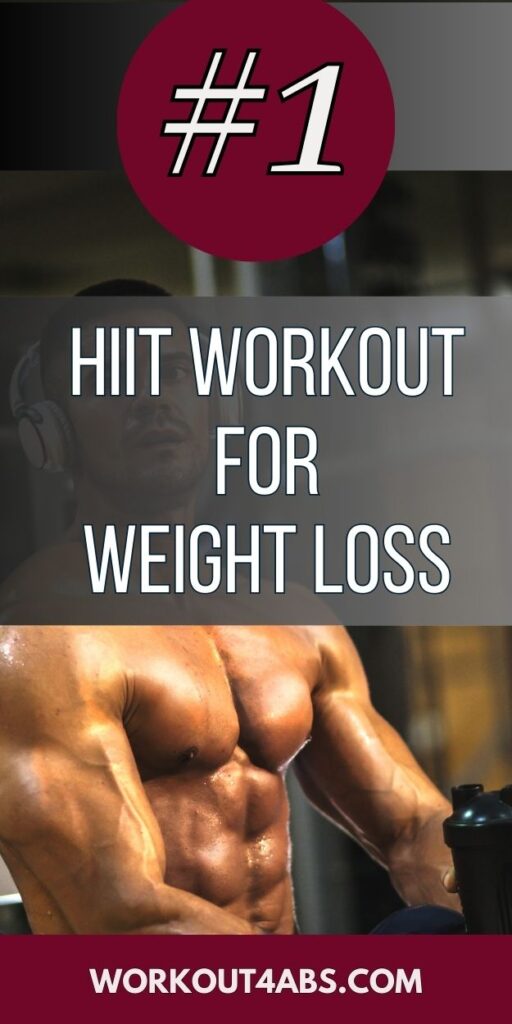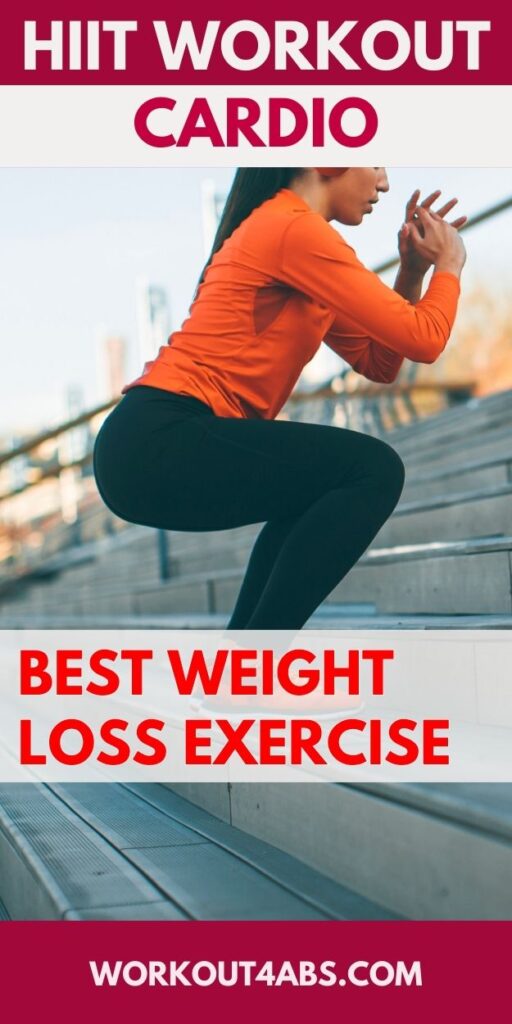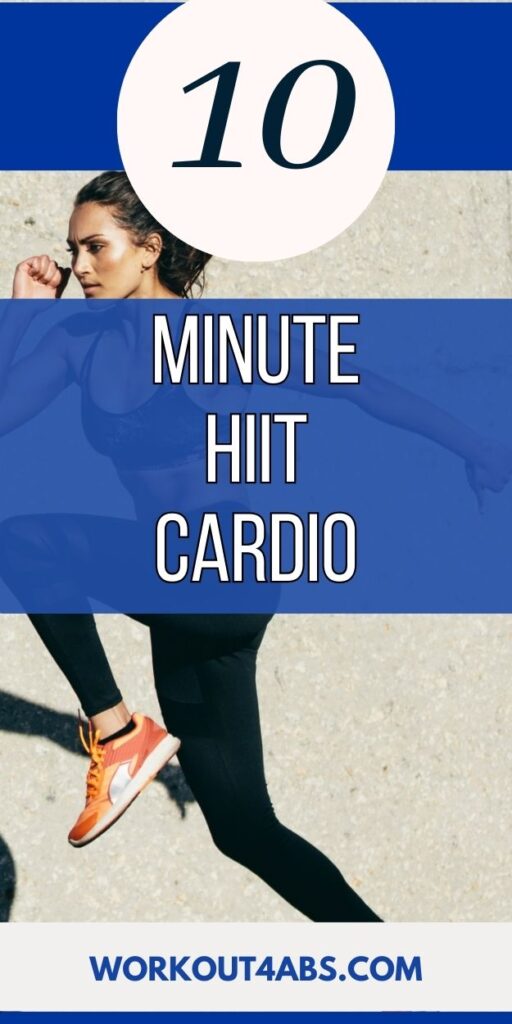HIIT workout for weight loss is a potent weight loss solution within the comfort of your home. High-Intensity Interval Training (HIIT) is a dynamic, time-efficient workout designed to torch calories and shed excess pounds. Elevate your fitness journey and achieve your weight loss goals with this accessible solo workout regimen.
The PERFECT 10 Minute HIIT Cardio Workout To Lose Fat (Gym or Home)
HIIT for Weight Loss – Workout at Home
This HIIT workout for weight loss
alternates between periods of high-intensity exercise and active rest to maximize calorie burn and cardiovascular benefits. Here’s a step-by-step guide:
Equipment Needed:
- A timer or stopwatch (you can use a smartphone app or a dedicated timer).
- A yoga mat or exercise mat (optional but useful for comfort during floor exercises).
Workout Instructions:
- Burpees (1 Minute):
- Stand with your feet hip-width apart.
- Drop into a squat position and place your hands on the floor.
- Kick your feet back into a plank position.
- Perform a push-up (optional).
- Jump your feet back to the squat position.
- Explosively jump up from the squat, reaching your arms overhead.
- Repeat this sequence as quickly as possible for one minute.
- Active Rest (1 Minute):
- During your active rest, you can either jog in place (running on the spot) or perform light jumping jacks. This is a recovery period, so keep the intensity lower than during the work intervals.
- Mountain Climbers (1 Minute):
- Get into a plank position with your hands directly under your shoulders.
- Alternate bringing your knees toward your chest in a running motion.
- Keep your core engaged and maintain a brisk pace for one minute.
- Active Rest (1 Minute):
- Same as the previous active rest period. Choose jogging in place or light jumping jacks.
- Squat Jumps (1 Minute):
- Stand with your feet shoulder-width apart.
- Perform a squat by bending your knees and pushing your hips back.
- Explosively jump up from the squat position.
- Land softly and immediately go into the next squat jump.
- Repeat this sequence as quickly as possible for one minute.
- Active Rest (1 Minute):
- Continue with your chosen active rest activity (jogging in place or light jumping jacks).
- Running in Place (1 Minute):
- Stand in one place and start jogging as if you were running.
- Lift your knees as high as comfortably possible while maintaining a brisk pace for one minute.
- Active Rest (1 Minute):
- Again, stick with jogging in place or light jumping jacks.
- Jump Rope (1 Minute):
- If you have a jump rope, use it. Jump rope in place for one minute.
- If you don’t have a jump rope, simulate the motion by jumping up and down while rotating your wrists as if turning a rope.
- Active Rest (1 Minute):
- For the final active rest period, choose jogging in place or light jumping jacks.
Repeat the Cycle:
- After completing the active rest following jump rope, go back to the beginning of the sequence and repeat it one more time.
This HIIT workout provides a total of 10 minutes of intense exercise interspersed with active recovery periods. It’s a quick and effective way to get your heart rate up, burn calories, and improve cardiovascular fitness in a short amount of time. Make sure to warm up and cool down before and after your workout to prevent injury and aid in recovery.
If you enjoyed these tips, please save this pin to your Pinterest Board.

HIIT Improve Cardiovascular Fitness
High-Intensity Interval Training (HIIT) is a highly effective and efficient exercise regimen that can significantly improve cardiovascular fitness. It does so through several mechanisms:
- Increased Heart Rate: HIIT involves short bursts of intense exercise followed by brief rest periods. During the high-intensity intervals, your heart rate spikes significantly. This rapid increase in heart rate challenges your cardiovascular system to pump blood and oxygen to working muscles at a much faster rate than steady-state exercises, like jogging or cycling at a moderate pace.
- Improved Stroke Volume: Stroke volume refers to the amount of blood pumped by the heart with each beat. HIIT can increase stroke volume over time, as the heart becomes more efficient at filling with blood during rest periods and ejecting blood during high-intensity intervals. This improved efficiency allows the heart to pump more blood with each beat, reducing the number of beats required to maintain the same cardiac output during exercise.
- Enhanced Cardiac Output: Cardiac output is the amount of blood pumped by the heart per minute. HIIT can increase cardiac output by improving both heart rate and stroke volume. This means more oxygen-rich blood is delivered to your muscles, enabling them to perform better during intense exercise.
- Improved Oxygen Utilization: HIIT also enhances the body’s ability to use oxygen efficiently. During high-intensity intervals, your muscles require a significant amount of oxygen to produce energy. HIIT forces your body to adapt by improving its ability to extract and utilize oxygen, which reduces the overall strain on your cardiovascular system.
- Lower Resting Heart Rate: Regular HIIT workouts can lead to a lower resting heart rate. A lower resting heart rate indicates that your heart is becoming more efficient at pumping blood, even when you are at rest. This is a positive sign of improved cardiovascular health.
- Reduced Blood Pressure: HIIT has been shown to help lower blood pressure, which is a key indicator of cardiovascular health. By improving the elasticity of blood vessels and reducing arterial stiffness, HIIT can contribute to overall cardiovascular well-being.
- Enhanced Vascular Function: HIIT can improve the function of the inner lining of blood vessels, known as the endothelium. A healthy endothelium is critical for regulating blood flow and preventing the development of atherosclerosis (hardening of the arteries).
- Increased VO2 Max: VO2 max is the maximum amount of oxygen your body can use during intense exercise. HIIT has been shown to significantly increase VO2 max, indicating an improvement in your body’s aerobic capacity.
In summary, HIIT improves cardiovascular fitness by challenging and strengthening the heart, enhancing oxygen utilization, and promoting overall cardiovascular health. It’s an efficient way to improve your cardiovascular fitness in a relatively short amount of time compared to traditional steady-state aerobic exercises. However, it’s essential to start HIIT gradually and seek guidance from a fitness professional or healthcare provider, especially if you are new to intense exercise or have underlying health conditions.
If you enjoyed these tips, please save this pin to your Pinterest Board.

HIIT Improves Athletic Performance
High-Intensity Interval Training (HIIT) can significantly improve athletic performance by targeting various physiological and performance-related aspects. Here’s how HIIT contributes to enhanced athletic performance:
- Cardiovascular Endurance: HIIT improves cardiovascular endurance by challenging the cardiovascular system to adapt to high-intensity intervals. This adaptation leads to a more efficient heart, increased stroke volume, and enhanced oxygen transport, enabling athletes to sustain high-intensity efforts for longer durations.
- Anaerobic Capacity: HIIT primarily focuses on anaerobic energy systems, which are crucial for activities that involve short bursts of intense effort. By repeatedly pushing anaerobic thresholds during high-intensity intervals, HIIT enhances an athlete’s ability to perform high-intensity activities, such as sprinting, jumping, and lifting, with greater power and speed.
- Muscular Strength and Power: Many HIIT workouts incorporate resistance exercises, such as bodyweight exercises, plyometrics, or weightlifting. These exercises help improve muscular strength and power, making athletes more explosive and capable of generating greater force during movements like sprinting, jumping, and throwing.
- Fatigue Resistance: HIIT enhances an athlete’s resistance to fatigue. By training at high intensities with short rest periods, athletes adapt to fatigue more effectively, allowing them to maintain their performance levels for longer periods without experiencing a significant drop in power or speed.
- Speed and Agility: HIIT can improve an athlete’s speed and agility, particularly when it includes drills and exercises that mimic sport-specific movements. These workouts enhance neuromuscular coordination and proprioception, helping athletes become more agile and responsive in their sports.
- Metabolic Efficiency: HIIT can improve the body’s metabolic efficiency, enabling athletes to utilize energy more effectively during high-intensity efforts. This efficiency is essential for sustaining performance and delaying the onset of fatigue.
- Elevated EPOC (Excess Post-Exercise Oxygen Consumption): HIIT can lead to a prolonged elevation in the metabolic rate after the workout, known as the “afterburn” effect. This means that the body continues to burn calories and fat at an elevated rate even after the workout has ended, which can aid in weight management and overall athletic conditioning.
- Mental Toughness: HIIT challenges an athlete’s mental toughness and resilience. The mental fortitude developed during intense HIIT sessions can translate into improved performance in competitive situations, where mental strength is as critical as physical abilities.
- Time Efficiency: HIIT offers time-efficient training sessions, making it easier for athletes to fit intense workouts into their schedules. This allows athletes to maximize their training while minimizing the time commitment, which can be especially beneficial for those with busy training and competition schedules.
- Injury Prevention: HIIT can help prevent injuries by improving joint stability, balance, and overall body strength. This reduced risk of injury allows athletes to maintain consistent training and competition participation.
Incorporating HIIT into an athlete’s training program should be done strategically and with consideration of their specific sport and performance goals. It’s important to tailor HIIT workouts to the individual’s needs and gradually increase intensity and volume to prevent overtraining and reduce the risk of injury. Consulting with a coach or sports performance specialist can help design a HIIT program that optimally supports an athlete’s goals and sport-specific requirements.
HIIT Improves Weight Loss
High-Intensity Interval Training (HIIT) is an effective and efficient approach for weight loss. It helps individuals shed excess body fat through several key mechanisms:
- Caloric Expenditure: HIIT workouts typically involve short bursts of intense exercise followed by brief recovery periods. During the high-intensity intervals, the body expends a significant amount of energy, resulting in a substantial calorie burn. This calorie expenditure continues even after the workout as the body works to restore oxygen levels and repair muscle tissue. This phenomenon is often referred to as the “afterburn” effect, or excess post-exercise oxygen consumption (EPOC), and it can lead to an increased calorie burn for hours after the workout.
- Metabolic Rate: Regular HIIT training can boost your resting metabolic rate (RMR), which is the number of calories your body burns at rest. HIIT helps increase muscle mass and improve muscle quality, both of which require more energy to maintain. As a result, your body becomes more metabolically active, burning more calories even when you’re not exercising.
- Fat Oxidation: HIIT promotes fat oxidation, meaning your body becomes more efficient at using stored fat for energy. This is partly due to the high-intensity intervals, which deplete glycogen stores and force the body to rely on fat as a fuel source during recovery periods.
- Appetite Regulation: HIIT may help regulate appetite hormones. Some studies suggest that HIIT can reduce levels of the hunger hormone ghrelin and increase levels of hormones that promote satiety, potentially leading to reduced calorie intake.
- Muscle Retention: HIIT preserves lean muscle mass while promoting fat loss. Traditional steady-state cardio can lead to muscle loss along with fat loss, whereas HIIT prioritizes the preservation of muscle tissue. This is essential because muscle tissue requires more energy to maintain than fat tissue, contributing to a higher RMR.
- Time Efficiency: HIIT workouts are typically shorter in duration compared to traditional steady-state cardio workouts. This time efficiency makes it easier for individuals with busy schedules to commit to regular exercise, increasing adherence to a fitness routine.
- Variety and Enjoyment: HIIT workouts can be diverse and engaging, which helps prevent workout boredom. Enjoyable workouts are more likely to be maintained over the long term, contributing to sustained weight loss efforts.
- Improved Insulin Sensitivity: HIIT can enhance insulin sensitivity, which means your body is better able to regulate blood sugar levels. This can reduce the risk of insulin resistance and type 2 diabetes, which are often associated with weight gain.
It’s important to note that while HIIT can be highly effective for weight loss, it should be part of a comprehensive approach that includes a balanced diet, adequate hydration, and sufficient rest. Additionally, individual results can vary, and not everyone will experience the same rate of weight loss with HIIT. It’s essential to consult with a healthcare professional or fitness expert before starting any new exercise program, especially if you have underlying health conditions or are new to high-intensity exercise. They can help you create a safe and effective HIIT plan tailored to your specific needs and goals.
If you enjoyed these tips, please save this pin to your Pinterest Board.

Home › Aesthetic Body Plan ›HIIT Workout for Weight Loss